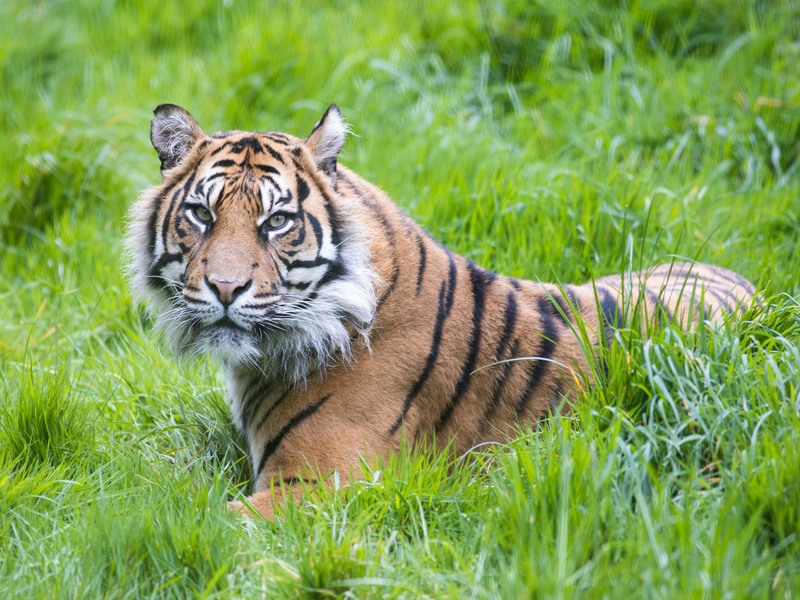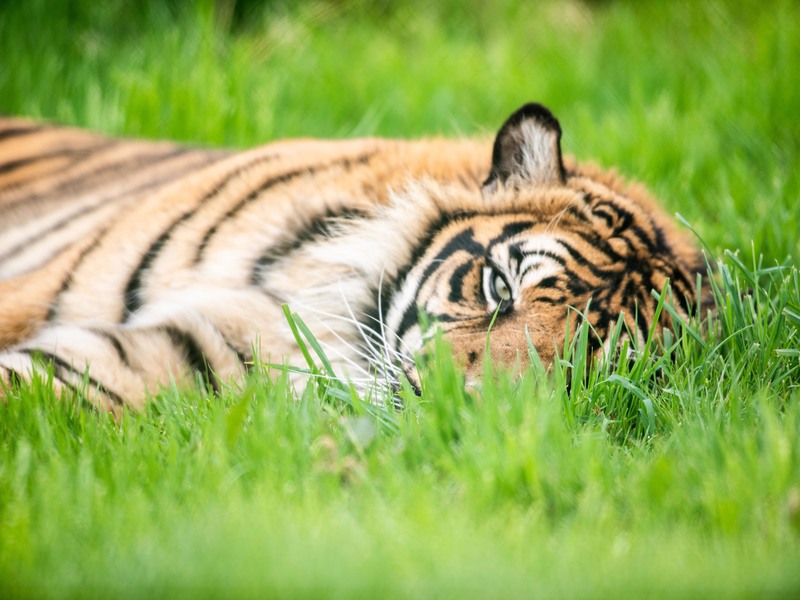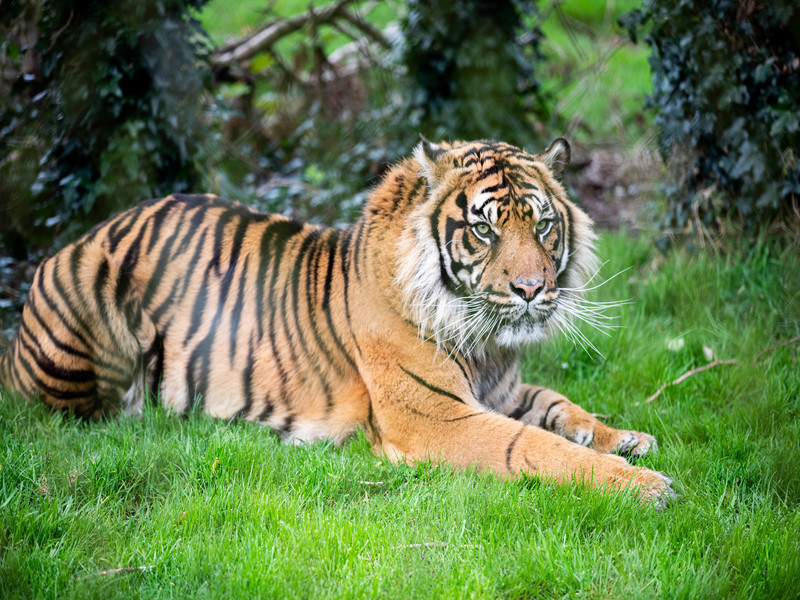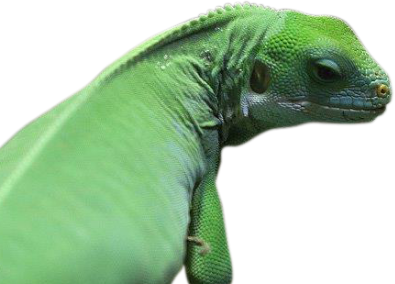Sumatran Tiger
KEY FACTS
-
LATIN NAMEPanthera tigris sumatrae
-
BIOMETropical Forests, Temperate Forests
-
CLASSMammal
-
ORDERCarnivores
-
CONSERVATION STATUSCritically Endangered
COME AND FIND ME AT..
The Asian Sanctuary

Sumatran Tiger
The critically endangered Sumatran tiger is the smallest of all tiger subspecies, with their size assisting them in navigating the dense, tropical forests in which they hunt. They are distinguished by heavy black stripes on their orange coat and a white ‘beard’. Unlike most other cats, tigers like to swim. They have partial webbing between their toes making them efficient swimmers. They are carnivorous and will eat whatever they can successfully hunt including fish, crocodiles, and fowl, with the most common larger prey being wild pigs and deer.

Habitat
The Sumatran Tiger inhabits a landscape that ranges from Sub Mountain and Mountain Forest to Lowland Forest and Peat Forest on the Indonesian island of Sumatra.
Wild Notes
The Sumatran tiger is the only surviving member of the Sunda Islands group of tigers that included the now extinct Bali tiger and Javan tiger. Being solitary animals, they are highly adapted to ambush hunting, using their stripes as camouflage against the dappled light of the forest floor. Sumatran Tigers will lie in wait to prey upon wild boar, birds, tapir, fish, and deer.

Conservation
The Sumatran Tiger was classified as Critically Endangered by the IUCN in 2008 and recent estimates suggest that there are only 300 – 500 individuals remaining in the wild, with no subpopulation larger than 50 individuals and a declining trend. Habitat loss and poaching are the two biggest threats faced by tigers in the wild. Natural habitats in Southeast Asia have been drastically reduced by intensification of agriculture; usually palm oil plantations and this region has more endangered species than anywhere else in the world.
Did You Know?
The Sumatran Tiger is the smallest and darkest tiger subspecies and tends to be more bearded and maned than the other subspecies.
The Fota Connection.
Sumatran tigers first arrived at Fota Wildlife Park in 2014 as part of the European Endangered Species programme (EEP).
There are two Sumatran tigers at Fota Wildlife Park, a nine-and-a-half-year-old male, Batak, and a two-and-a-half-year-old female Jambi.


















